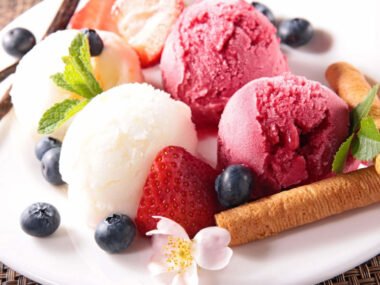For many, the centerpiece of a festive meal is a beautifully glazed ham. Achieving that perfect caramelization can elevate any gathering, leaving guests eager for more. This guide explores techniques and tips to master the art of glazing, ensuring that the ham not only looks stunning but also tastes divine.
Selecting the Appropriate Style
Choosing how to slice the meat is crucial for crafting a meal that hits the spot just right! Opting for a bone-in ham is key to unlocking that flavor and keeping things nice and moist throughout cooking. Although spiral cut hams are super handy for prep work in the kitchens bustle world we live in today. There’s a risk they might end up a bit dry when it’s time to dig in at the table. Going for a ham instead gives you a say in how things turn out during cooking. Ensuring every bite stays juicy and satisfyingly tasty with a recipe like Dr. Pepper glazed ham recipe is easy.
Getting Ready for Excellence
Before embarking on your cooking adventure, it’s essential to make sure you’re well prepared. Begin by unwrapping the ham and giving it a rinse under water. Dabbing it dry with paper towels can help the glaze stick better. Creating a diamond pattern on the surface with a knife not only makes it look more appealing but also lets the flavors seep in more effectively.
Making a Glaze
Crafting a glaze can elevate a ham into a culinary work of art! Classic glazes usually blend savory flavors together: think brown sugar or maple syrup for sweetness, mustard or cloves for depth of flavor, and a dash of ginger for that extra oomph. You might want to infuse pineapple or orange juice into the mix for a kick. Combining these elements into a paste guarantees a nice spread of flavors throughout the dish.
Cooking With the Glaze
Applying the glaze at the right time is crucial for a successful cooking outcome! To avoid burning your dish while still getting that glaze goodness to sink in nicely into the scored surface cuts of your food, consider brushing on the coat during the last hour of cooking and repeating this process every 15 to 20 minutes to enhance the flavor and get that desirable caramelization effect.
Controlling the Temperature
Controlling the temperature is key to cooking ham and keeping it tender without allowing it to dry out. Aim for an internal temperature of approximately 325°F (160°C). To ensure safety and juiciness, ensure the internal temperature reaches 140°F (60°C) before serving the dish.
Enjoying Some Succulent Meat
After removing the ham from the oven, it’s essential to let it rest for 15 to 20 minutes before cutting into it. This helps to spread the juices within the meat, making it more flavorful and tender. Covering it loosely with foil keeps it warm without trapping moisture that could affect the glaze.
Presenting the Dish
How you present a meal is crucial for enhancing your dining experience. The key to achieving tenderness is slicing the ham using a sharp carving knife against the grain. Artfully arranging the slices on a serving platter highlights the caramelized layer of the ham. Finishing off the meal with side dishes, like vegetables or a fresh salad, perfectly complements the course.
Addressing Problems
Without thorough planning and preparation, unexpected obstacles can crop up in the kitchen. If the glaze on your dish seems a tad watery, a sprinkle of more sugar or honey can help thicken it up. If you find your ham salty, a quick remedy could be soaking it in water for a few hours before cooking to even out the taste. If your glaze starts to burn lightly, covering the ham with foil can shield it from burning while allowing that delicious caramelization process to carry on smoothly.
Exploring Taste Combinations
Traditional glazes are still widely enjoyed. However; trying out new flavors could make the meal preparation process exciting. Adding spices, like cinnamon, nutmeg, or cardamom, not only brings heat but also deepens the flavor profile of the dish. For a change, why not experiment with a glaze featuring vinegar or soy sauce to infuse some umami goodness? Personalizing the glaze makes room for creativity and adds unique flavors to your culinary creations.
Conclusion
Making a caramelized glazed ham ideally entails focusing on the details and being patient. However, the outcomes are truly rewarding and worth the time spent. By choosing the cut of meat and preparing it meticulously while exploring flavors and combinations, anyone can craft a remarkable main course that pleases the senses. With these culinary suggestions, all your upcoming celebrations will be a success.










